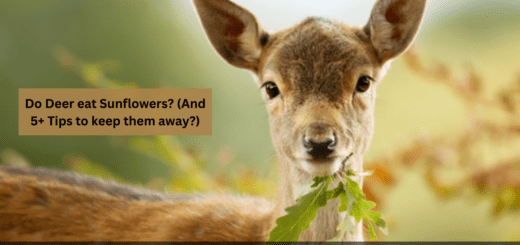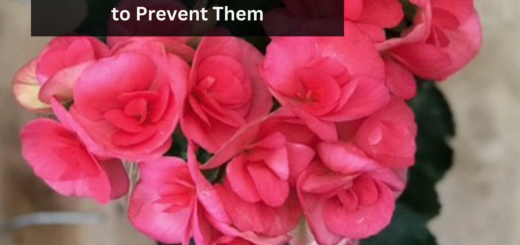What is Woodland Phlox? – How to Grow and Care for Woodland Phlox Plants?
I recently bought a beautiful baby woodland phlox plant from a local nursery. However, I made the mistake of underestimating the amount of sunlight it receives because the plant looked very healthy first few weeks but, as the days grew warmer, I noticed the flowers starting to droop and the stems falling down. I began to wonder, did I unwillingly kill the plant? Or could this be due to underwatering?
To find the answer, I delved into detailed research on woodland phlox. I’ve compiled all my research here, so you can learn how to properly grow and care for woodland phlox plants. Let’s not waste any time and get started on growing them.
Quick takeaways:
- The scientific name of woodland phlox is Phlox divaricata.
- They are perennial species and are native to Florida and Texas.
- Commonly known as Louisiana phlox or wild sweet william, these plants grow quickly in sun and partial shade.
- The sticky hairs on the stems and leaves are a part of the defense mechanism of these plants.
- They form an excellent ground cover and don’t show as much creeping as the creeping moss or phlox.
- The flowers are fragrant and hardy in zones 3-8.
- These flowers appear to bloom in the summer season.
- They belong to the family Polemoniaceae and have blue-colored flowers that are seen in clusters.
| Common Name | Woodland phlox, wild blue phlox |
| Botanical Name | Phlox divaricata |
| Family | Polemoniaceae |
| Plant Type | Herbaceous, perennial |
| Mature Size | 9-12 in. tall, 9-12 in. wide |
| Sun Exposure | Partial, shade |
| Soil Type | Moist, well-drained |
| Soil pH | Neutral |
| Bloom Time | Spring |
| Flower Color | Purple, blue |
| Hardiness Zones | 3a-8a (USDA) |
| Native Area | North America |
How to grow Woodland phlox?
For growing woodland phlox various conditions are required:
Water: the plants should be watered well to keep them healthy. As soon as the plant gets dry, it needs to be watered. Watering at the root zone is important if you overwater the plants, which may cause damage to the parts of plants.
Sun: the woodland phlox grows well in the full sun. though a healthy is witnessed in the partial shady spots too.
Soil: The woodland phlox grows amazingly well in the fertile, moist soil containing natural nutrients. A good supply of organic matter is important. Soil should be well-drained with a pH of neutral to alkaline type.
Cutting: By cutting the tips and stems the growth can be enhanced after the fall season.
Make sure the foliage is growing well so that it can attract pollinators which will help them grow

How to care for Woodland phlox
Light needs
- This variety will grow best in the shade, so you are not required to feed this plant with full sunlight.
- Especially if you live in a cold climatic condition, place your plant in a good location where the plant remains healthy.
- Last but not least, you have to provide your plant with a good amount of filtered sunlight.
Watering needs
- You have to provide water to your plant so that it thrives well.
- You have to check the moisture of the soil by putting your finger in the soil, and if it feels dry about an inch, then you have to water the plant.
- But be cautious while watering your plant as the plant does not like to be waterlogged.
Soil needs
- This plant will grow well in the well-drained and moist soil.
- Keep in mind that you do not have to keep the soil waterlogged as it will cause issues in the plant.
- Mulch your plant so that the plant receives nutrients to remain healthy.
Temperature and Humidity needs
- The ideal range of temperature for this plant is the average room temperature.
- If you are comfortable in your area, then your plants will also survive well in this,
- The overheating temperature will not be liked by these plants.
Fertilizer needs
- Last but not least, every plant requires fertilizer to grow well as fertilizer provides the plant with more nutrients.
- Though they are fertilized naturally, you can fertilize them in your landscape garden.
- At the time of spring, you have to provide your plant with compost in the soil.
Pruning needs
- Deadheading spent flowers can help to prolong bloom time and prevent unwanted reseeding.
- You can simply pinch or cut back the stems in early summer if you want to delay blooming and get bushier plants with more flower heads.
- This will enhance the cluster formation and bloom with time.
Mulching
- After the summer heat, add a layer of mulch to the warm soil so that the temperature of the soil turns back to normal.
- This will also hinder any weed appearance plus also keep the soil moist.
- The flowers of woodland phlox should be kept on the stem-like soil so that the seed pod, matures, and seeds can be collected.
How to plant Woodland phlox?
Woodland phlox is one of those plants that you can grow in your home garden. But it is important to know how can you easily plant Woodland phlox. Below are the points that will help you in knowing how to plant Woodland phlox:
- You can easily plant them in the home garden at the time of spring season or autumn.
- Plant this variety when the soil is warm and moist.
- It will not survive in dry soil such as sandy soil which is well-drained.
- You have to maintain the growth of the plant by improving the texture of the soil.
- Provide your soil with compost and manure as it will add nutrients to the soil.
Propagation
The woodland phlox can be propagated in the following ways:
Propagation of woodland phlox by seeds
The seeds can be planted directly into the soil, it is safe to plant them indoors some examples of other best indoor plants are Areca Palm, Ponytail Palm, Bamboo Palm, Lady Palm, etc. if you wish to see spring blooms 7 weeks before the last frost. Later, you can transplant it to the outdoors like a garden or container.
Propagation of Woodland phlox by division:
Another way and easiest way considered to propagate the phlox plants is by division. Separating the clumps into tiny parts with a sharp knife in the late summer will let you plant it immediately. Make sure that each decision has 4 shoots and a root system preferably.
The stem cutting that is taken in the summer has also been shown to propagate the phlox.

Pest, diseases, and problems of phlox
- Aphids and spider mites have been seen to attack phlox species.
- Caterpillars and whiteflies attack the phlox species and create big holes in parts of plants.
- Powdery mildew is also a problem for phlox plants that are attacked by these pests.
- Trimming the old stems can help in reducing such problems.
For more such plant-related articles, you may also read, Why do Rubber Tree Leaves curl? – A few possible reasons for Rubber Plant Leaves curling!
Varieties of phlox
The species of phlox are special as the flowers are attractive. The varieties of phlox involve:
Phlox divaricata: The common name is the blue moon as they bear violet-blue flowers.
Phlox stolonifera: also called creeping phlox as they are great for creating thick groundcovers.
Phlox subulata: commonly called moss phlox, again known for thick mats of colors in springtime.
Phlox paniculata: also called garden phlox, the flowers have long stalks.
How to Get Woodland Phlox to Bloom?
Do you know how to get woodland phlox to bloom? If yes, then it’s great but if not. Then you should know about it.
Woodland phlox is one of the unique and adored choices of gardeners. This plant will bloom if it receives pollination from the long-tongued insects.
So, if you want to get your plant to bloom, then you have to invite some of the best insects such as hummingbirds, tiger swallowtails, bumblebees, etc to your plant as they will help in pollination. Even you will be happy to know that the other flowers will also be beneficial for it.
Wrapping up the context
In this guide, you come to know that the scientific name of woodland phlox is Phlox divaricata. They are perennial species and are native to Florida and Texas. Commonly known as Louisiana phlox or wild sweet william, these plants grow quickly in sun and partial shade.
They belong to the family Polemoniaceae and have blue-colored flowers that are seen in clusters. I hope you understand this guide well.
Thanks for reading! Happy Gardening!
FAQs
How do you care for phlox after they bloom?
As soon as the flowers appear on the plant, avoid overhead watering, instead, provide them with water near the soil level. Keep the petals dry, adding mulch will also help in creating moisture in the soil.
Do phlox return every year?
Phlox are self-sufficient perennials that attract a lot of pollinators with them by their fragrant blooms. So, it’s natural and possible that phlox is supposed to return every year.
How do you keep phlox blooming all summer?
The blooms can be made to grow more by doing the deadhead technique on the plants. The overall health also improved by deadheading
How do you keep phlox from falling over?
Phlox plants love the sun. Maintaining a proper space between the plants helps them to get proper air and sun rays so that the leaves don’t stay too moist. Don’t water the plant later in the day, which will create a damp condition for the blooms and leaves.


